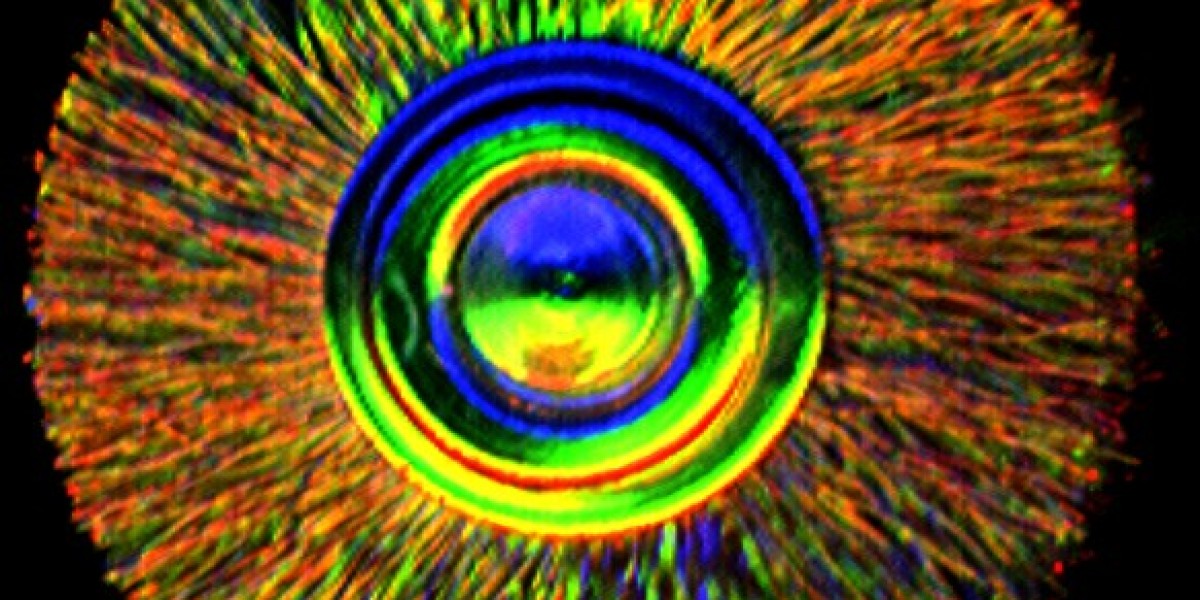The Heart Of The Internet
**Low Dosage Dbol Only Cycle**
When exploring the world of performance enhancement, many athletes and bodybuilders seek a regimen that balances efficacy with safety. One popular approach is a low‑dosage Dianabol (Dbol) cycle focused on maximizing muscle gains while minimizing side effects. In this strategy, users typically administer 5 to 10 mg per day, a fraction of the standard prescription dose. The key advantages include:
1. **Reduced Estrogenic Effects**
Lower doses lessen aromatization, which translates into fewer water retention issues and less risk of gynecomastia.
2. **Shorter Cycle Duration**
Because the dosage is modest, cycles can often be condensed to 4–6 weeks without compromising performance, thereby limiting cumulative exposure.
3. **Simplified Post‑Cycle Care**
With a shorter cycle and fewer side effects, users may skip intensive post‑cycle therapy (PCT), though monitoring hormone levels remains essential.
4. **Accessibility for Novices**
For first‑time users, the lower risk profile makes this an attractive entry point into steroid training.
Overall, the low‑dose, short‑duration strategy offers a balanced approach between efficacy and safety, especially for those prioritizing rapid results while mitigating health risks.
---
### 4. Comparison of Steroid Options
| Steroid | Typical Cycle Length | Dosage (mg/day) | Primary Effects | Key Side‑Effects |
|---------|----------------------|-----------------|-----------------|------------------|
| **Testosterone Enanthate** | 8–12 weeks | 250–500 | Strength, muscle mass | Acne, gynecomastia, fluid retention |
| **Dianabol (Methandrostenolone)** | 4–6 weeks | 20–30 | Rapid hypertrophy, early strength | Liver toxicity, hypertension |
| **Anadrol (Oxymetholone)** | 4–6 weeks | 50–75 | Massive weight gain, bone density | Hepatotoxicity, edema |
| **Winstrol (Stanozolol)** | 8–12 weeks | 5–10 | Cutting, joint health | Liver damage, high LDL |
| **Testosterone** | Chronic | Variable | Foundation for performance | Hormonal imbalance |
---
## 3. How to Maximize Gains While Reducing Health Risks
### 3.1 Prioritize Natural Enhancement First
- **Nutrition:** Adequate protein (1.6–2.0 g/kg), balanced carbs, healthy fats.
- **Training:** Periodized strength and hypertrophy programs; progressive overload.
- **Recovery:** Sleep ≥7‑9 h/night, active recovery, stress management.
### 3.2 Use "Safer" Supplements
- **Creatine Monohydrate (≤5 g/day):** Proven efficacy, minimal side effects.
- **Branched‑Chain Amino Acids (BCAAs) or Essential Amino Acids (EAAs):** Support muscle protein synthesis.
- **Beta‑Alanine:** Improves muscular endurance with minimal risk.
### 3.3 If Considering Performance‑Enhancing Drugs
- **Consult a Medical Professional:** Only under supervision to monitor bloodwork, liver enzymes, lipid profiles.
- **Start Low, Go Slow (SLGS):** Use the lowest effective dose for the shortest period possible to reduce adverse events.
- **Regular Monitoring:** CBC, liver function tests, cardiac evaluation (ECG), hormone panels.
---
## 5. Practical Guidance & Summary
| Category | Recommended Actions |
|----------|---------------------|
| **Training** | Structured resistance program 3–4×/wk, progressive overload, adequate volume (15–20 RM per set). Include cardio for cardiovascular health. |
| **Nutrition** | 1.25–2.0 g/kg protein; maintain energy balance with slightly higher calories than basal needs; moderate carbs and healthy fats. |
| **Supplements** | Creatine monohydrate, whey protein isolate, vitamin D (if deficient). |
| **Lifestyle** | Sleep ≥7 h/night; manage stress; avoid smoking/alcohol in excess. |
| **Monitoring** | Track body composition weekly; adjust calories/protein accordingly. |
---
## 5. Practical Timeline for the Next 3–6 Months
| Week | Goal | Actions |
|------|------|---------|
| 1‑2 | Baseline assessment (body composition, strength tests). | Measure weight, waist circumference, 1RM bench/overhead press; record baseline creatine levels. |
| 3‑4 | Initiate supplementation and training. | Start 5 g/day creatine monohydrate; begin 4× per week upper-body hypertrophy program (progressive overload). |
| 5‑8 | Evaluate strength gains & adjust loads. | Increase bench/overhead press loads by ~2.5–5 kg if 1RM improved >10%. |
| 9‑12 | Monitor body composition changes. | Reassess weight, waist circumference; adjust caloric intake to maintain slight deficit (~200 kcal/day). |
| 13‑16 | Peak training intensity. | Incorporate periodization: lower rep ranges (6–8) with higher loads; add accessory work for upper back and shoulders. |
| 17‑20 | Final assessment & taper. | Reduce volume by ~30% to allow recovery before final measurement; re-evaluate waist circumference and body fat % via DEXA or BIA. |
### Expected Outcomes
- **Waist circumference**: ≥ 2 cm reduction if caloric deficit is maintained and resistance training induces muscle hypertrophy in the abdominal wall.
- **Body fat percentage**: ~1–2 % decrease due to overall energy expenditure and lean mass gain, which increases resting metabolic rate.
These numbers are averages; individual variation can be larger depending on genetics, adherence, sleep quality, and hormonal status.
---
## 4. Practical Tips for "The 100‑Day Challenge"
| Category | Key Action |
|----------|------------|
| **Nutrition** | • Track calories in an app (MyFitnessPal).
• Keep a macronutrient balance of ~30% protein, 30% healthy fats, 40% carbs.
• Replace sugary drinks with water or unsweetened tea. |
| **Exercise** | • Do 3–4 strength‑training sessions per week (bodyweight or free weights).
• Add HIIT/interval cardio once a week (20 min).
• Include mobility and stretching after workouts. |
| **Sleep & Recovery** | • Aim for 7–8 h/night.
• Use blue‑light blocking glasses in the evening.
• Consider short naps if needed. |
| **Mindset** | • Track progress (food, workout logs).
• Celebrate small wins: a new personal record, more sleep, improved mood. |
---
## 5. Quick "Start‑Up" Plan for the Next 7 Days
| Day | Focus | Mini‑Goal |
|-----|-------|-----------|
| Mon | **Nutrition** – Eat at least one whole food meal (e.g., grilled chicken + veggies). | Log calories, note hunger level before & after. |
| Tue | **Sleep Hygiene** – Set a fixed bedtime; dim lights 30 min before sleep. | Get ≥7 h of uninterrupted sleep. |
| Wed | **Movement** – Do a 20‑minute walk or beginner yoga at home. | Record heart rate (if possible). |
| Thu | **Mindfulness** – 5‑minute guided meditation via app. | Notice any change in stress level. |
| Fri | **Hydration** – Drink ≥2 L water today; track cups consumed. | Check urine color for adequacy. |
| Sat | **Nutrition** – Eat a meal rich in complex carbs (e.g., quinoa, sweet potato). | Note satiety after 1 h. |
| Sun | **Reflection** – Review logs, identify what worked well or needs adjustment. | Plan next week's focus area. |
---
## 5. Practical Tips & Common Pitfalls
| Tip | Why It Helps | How to Apply |
|-----|--------------|-------------|
| **Use a consistent unit of measurement** (e.g., grams for food) | Reduces confusion when comparing values | Stick to one measuring system and keep tools handy |
| **Take readings at the same time each day** | Controls for circadian variations | Use alarms or calendar reminders |
| **Record everything immediately** | Prevents forgetting small details | Keep a small notebook or use a phone note app |
| **Set realistic goals** (e.g., 5‑10% weight loss in 6 months) | Avoids discouragement if progress is slow | Break down long‑term goals into weekly checkpoints |
| **Check for data consistency before adjusting diet** | Ensures you’re not reacting to an outlier | Compare multiple days of similar readings |
---
## 4. Practical Tips for a "Data‑Driven" Lifestyle
| Situation | How to Capture Data | What It Means |
|-----------|---------------------|---------------|
| **Eating at a restaurant** | Take a photo of the menu, note portions and ingredients. If you can, ask staff about approximate calories or protein. | Use online databases (MyFitnessPal, USDA) to estimate values. |
| **Home cooking** | Weigh raw ingredients before cooking; record weight after cooking (since water loss changes mass). Note any added oils or sauces. | This gives a more accurate "net" value for what you actually consumed. |
| **Snacking** | Keep a small notebook or app entry ready to quickly jot down the item, portion size, and time. | Consistency helps identify patterns or triggers. |
| **Hydration** | Use a reusable water bottle with volume markings; note when you refill. | Helps ensure you're meeting fluid intake goals. |
---
## 4. Practical Tips for Daily Implementation
| Category | Recommendation | Why It Matters |
|----------|----------------|---------------|
| **Morning** | Start your day with a glass of water before coffee/tea. | Rehydrates after overnight fast, kickstarts metabolism. |
| **Meals** | Aim to fill at least half the plate with vegetables and/or fruits. | Adds fiber, micronutrients, reduces calorie density. |
| **Snacks** | Choose protein‑rich options (nuts, Greek yogurt, boiled eggs) over sugary treats. | Keeps hunger in check, supports muscle maintenance. |
| **Drinks** | Keep a reusable bottle on hand; fill it with water or sparkling water flavored lightly with lemon/lime. | Reduces consumption of sugary sodas or energy drinks. |
| **Portion Control** | Use smaller plates or measuring cups for high‑calorie foods; check labels for serving sizes. | Prevents overeating even if food is healthy. |
| **Mindful Eating** | Slow down, chew thoroughly, and focus on taste rather than multitasking. | Enhances satiety signals from the brain. |
---
### 3. Practical Tips & Recipes (5–7 Minutes)
#### A. Quick "Snack‑Ready" Packs
1. **Veggie Sticks + Hummus**
- Carrot sticks, cucumber slices, bell pepper strips with a small container of hummus.
2. **Fruit & Nut Mix**
- Dried apricots, raisins, almonds, walnuts, and pumpkin seeds.
3. **Greek Yogurt Parfait**
- Low‑fat Greek yogurt layered with fresh berries and a sprinkle of granola.
#### B. One‑Pot Meal Ideas
- **Vegetable Stir‑Fry with Tofu**
*Ingredients:* Mixed vegetables (broccoli, carrots, snap peas), firm tofu cubes, soy sauce or tamari, garlic, ginger.
*Method:* Sauté garlic and ginger in a splash of oil; add tofu until browned; toss in veggies and sauce; cook until tender.
- **Chickpea & Spinach Curry**
*Ingredients:* Canned chickpeas, linktree.biz fresh spinach, diced tomatoes, onion, cumin, coriander, turmeric.
*Method:* Cook onions until translucent; add spices and tomatoes; simmer with chickpeas; stir in spinach until wilted.
### 5. **Sample Meal Plan (≈1500 kcal)**
| Time | Meal | Approx Calories |
|------|------|-----------------|
| Breakfast | Overnight oats with chia seeds, berries, and a scoop of whey protein | ~350 |
| Mid‑morning Snack | Greek yogurt + sliced almonds | ~200 |
| Lunch | Grilled chicken breast (150 g) + quinoa (1 cup cooked) + steamed broccoli | ~450 |
| Afternoon Snack | Apple + natural peanut butter (2 tbsp) | ~250 |
| Dinner | Baked salmon (120 g) + sweet potato mash (½ cup) + mixed salad with olive oil dressing | ~400 |
| **Total** | | **≈ 1,950 kcal** |
This plan supplies roughly **180 g protein** (~30% of total calories), **35–40 % carbs**, and the remainder as healthy fats.
---
## 3. Practical Tips & Common Pitfalls
| Tip | Why It Helps |
|-----|--------------|
| **Plan a "protein block" day**: Eat high‑protein meals on one or two days to reduce overall calorie intake while still meeting protein goals (e.g., chicken breast + whey shake). | Creates flexibility, keeps meals interesting. |
| **Use a meal‑prep routine**: Cook proteins in bulk; portion them into containers. | Saves time and prevents last‑minute unhealthy choices. |
| **Keep healthy snacks handy** (nuts, Greek yogurt, hard‑boiled eggs). | Avoids snacking on high‑calorie, low‑protein foods. |
| **Track macros, not just calories**: Focus on protein grams to stay within 1–2% range. | Helps maintain muscle mass while losing weight. |
---
## Quick Reference Cheat Sheet
| Goal | How to Do It | Example |
|------|--------------|---------|
| **Lose fat but keep muscle** | 1‑2 g/kg lean body mass protein; calorie deficit of ~500 kcal/day. | 75 kg male, 60 kg LBM → 120–150 g protein/day. |
| **Build muscle in a maintenance diet** | 2 g/kg total body weight protein + moderate carbs (5‑6 g/kg). | 70 kg woman → 140 g protein + 350–420 g carbs. |
| **Maximize lean gains with high energy intake** | 1.4–1.7 g/kg total weight + 5–10 g carbs per kg. | 90 kg athlete → 126–153 g protein, 450–900 g carbs. |
| **Weight‑loss cardio routine (moderate calories)** | 1.2–1.4 g/kg body weight, focus on high‑protein foods. | 80 kg man → 96–112 g protein. |
---
## Key Takeaways
- **Protein needs rise with training intensity and energy availability**; athletes require more than sedentary adults.
- **Body‑weight or total‑body‑mass calculations** are often used because lean mass is harder to measure accurately for most lifters.
- **Carbohydrate intake should be scaled to training load**: low during light days, high on heavy or volume‑heavy days.
- **When energy availability is limited (e.g., cutting phases), protein must still be sufficient**—often the upper range of recommendations—to protect muscle mass.
Feel free to let me know if you’d like deeper detail on any specific training phase or athlete profile!



